The historic first crewed launch of SpaceX's Crew Dragon took off successfully on Saturday 30 May, marking a new era for commercial spaceflight and the first time American astronauts have launched from US soil since 2011.
The launch from Kennedy Space Center in Cape Canaveral, Florida, was initially planned for Wednesday 27 May, but bad weather caused the flight to be postponed until 30 May.
The Falcon-9 rocket carrying the Dragon spacecraft lifted off at 15:22 EDT (20:22 BST), with astronauts Bob Behken and Doug Hurley crewing the historic test flight.
The mission, known as Demo-2, is the final test for SpaceX's human spaceflight system before it is certified by NASA for crewed missions to and from the International Space Station.
Currently US NASA astronauts travelling to the ISS launch aboard the Russian Soyuz spacecraft and rocket as part of a co-partnership with the Russian space agency Roscosmos.
But NASA's new partnership with Elon Musk's SpaceX is marking the first American launches from the United States since the retirement of the Space Shuttle in 2011.
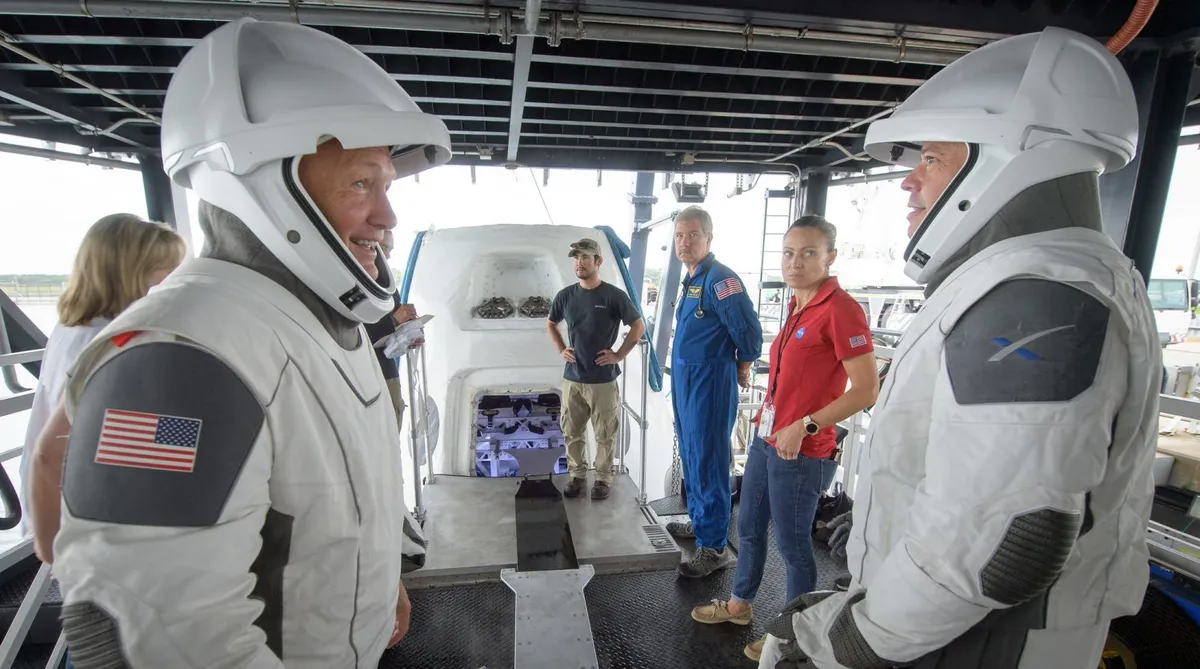
What did the Crew Dragon launch involve?
Crew Dragon astronauts Behken and Hurley lifted off atop the Falcon 9 rocket before being accelerated to speeds of about 27,000 km per hour.
Once in Earth orbit, the crew and SpaceX Mission Control on Earth communicated to ensure all was going to plan. Crew Dragon then docked with the International Space Station at 10:16am EDT (15:16 BST) on Sunday 31 May.
Once docked, Behnken and Hurley boarded the space station and became members of the Expedition 63 crew.
When the mission is complete, Crew Dragon will then undock with Behken and Hurley on board, and the journey back to Earth will begin. The spacecraft will re-enter Earth's atmosphere and splash down in the Atlantic Ocean near Florida, where the astronauts will be picked up by a recovery vessel.
If all goes to plan, NASA will certify Crew Dragon for future missions to the space station.
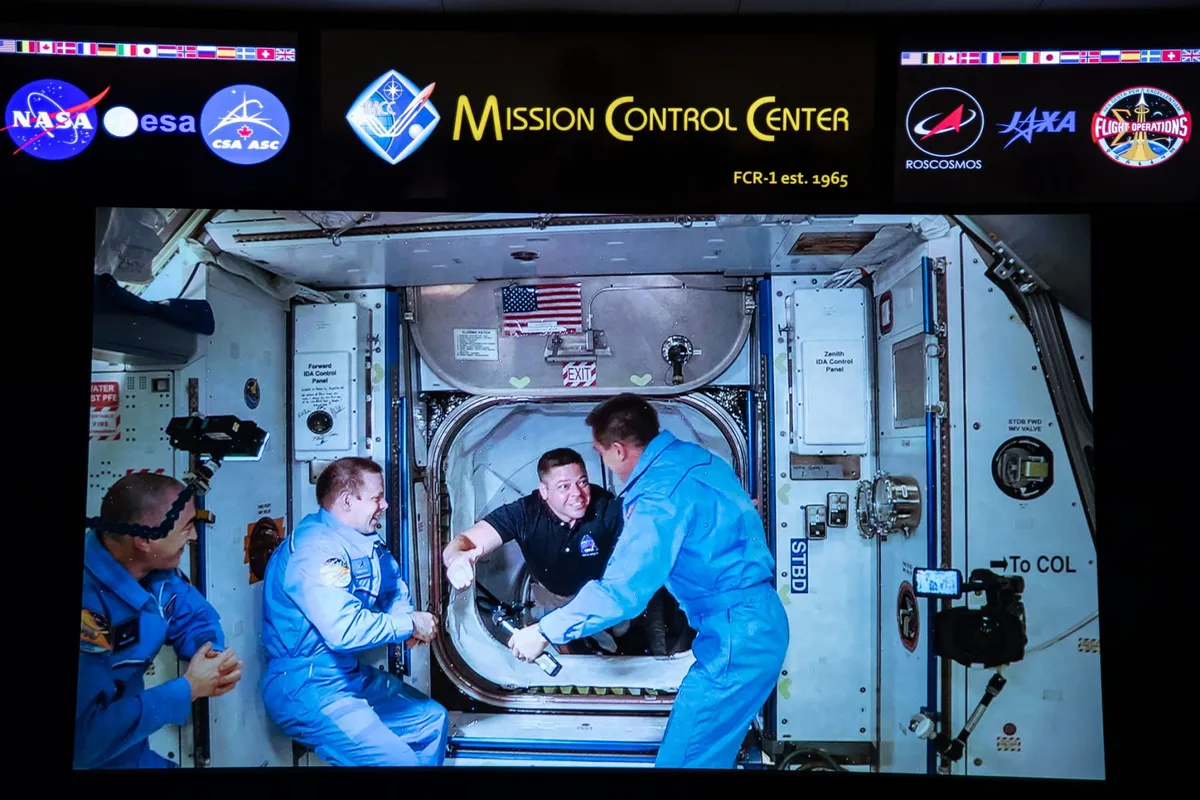
What is NASA's Commercial Crew Program?
Words: Shaoni Bhattacharya
NASA’s Space Shuttle programme was cancelled in 2011, leaving it reliant on Russian Soyuz rockets and capsules to get astronauts to and from the International Space Station (ISS).
Now NASA is aiming to get back to ferrying its own astronauts to low Earth-orbit, just as human spaceflight is entering a new commercial era.
If all goes to plan, it won’t be just governments and official agencies putting people into orbit in the International Space Station, but companies too: namely Boeing and Elon Musk’s SpaceX.
Although NASA has always used private contractors like Boeing to help build its rockets – from Apollo to the Space Shuttle era – the agency has always overseen the development process and operated the final product.
However, says space policy expert Professor Roger Handberg from the University of Central Florida, NASA was never built to be an operational organisation; rather it is tasked with developing technology and exploration.
By getting other companies to develop and operate rockets, NASA should free up resources to pursue other goals, such as sending people to the Moon or Mars, for which it is developing its own Orion spacecraft and powerful rocket, the Space Launch System (SLS).
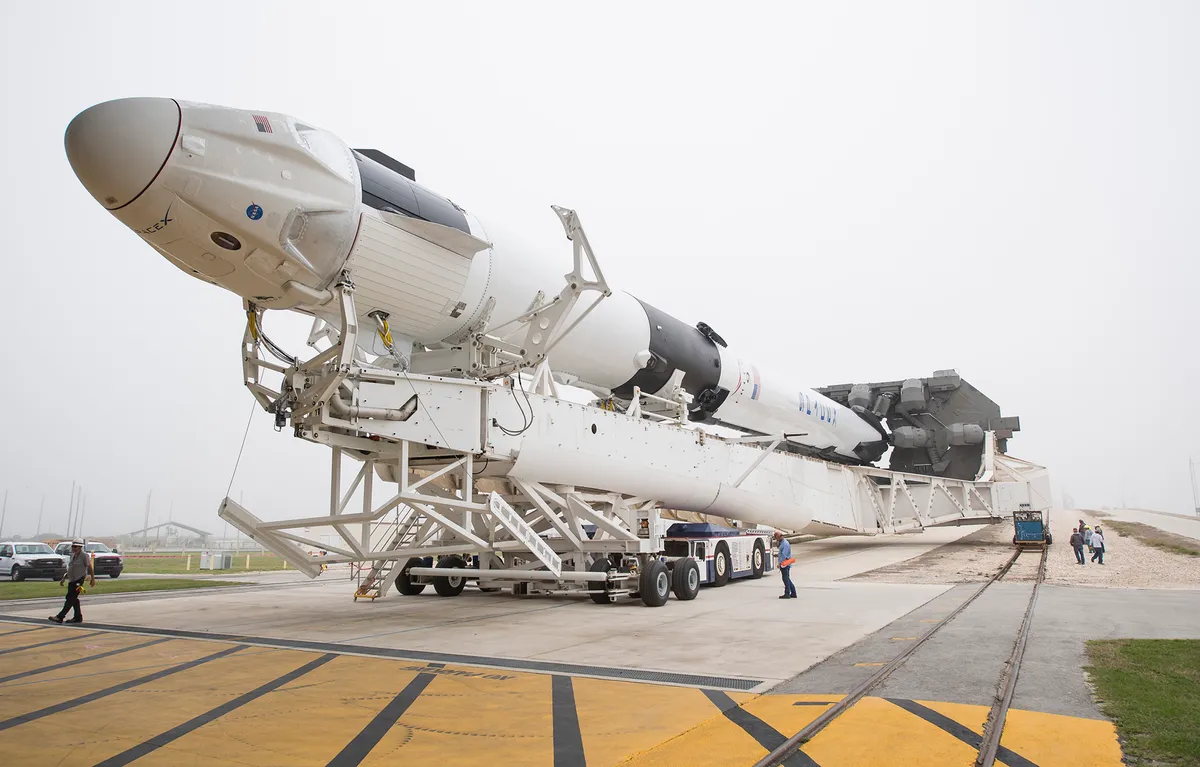
After the Shuttle programme’s demise, NASA opened up a commercial competition for the development of its replacement.
By 2014, the competitors had been whittled down to Boeing and SpaceX. NASA awarded contracts of $4.2 and $2.6 billion respectively.
Boeing has steamed ahead with developing its CST-100 Starliner crew capsule, and SpaceX its Crew Dragon, both of which are compatible with multiple launch vehicles such as NASA’s Atlas V and SpaceX’s own Falcon 9.
Both capsules are also reusable, as is the Falcon 9 launcher – a boon in an industry in which multi-billion dollar rockets are usually one-time use only. Both have seats for up to seven passengers.
NASA’s ultimate aim is to stop relying on Russia to get American astronauts to the ISS. Despite good collaboration with Russia since the famous 1975 Apollo-Soyuz docking mission, the current space relationship between America and Russia “can get pretty tricky,” says Handberg.
“A lot of Americans were very uncomfortable with our dependency on the Russians,” he says.
“One of the things that the US and NASA always maintain is that, ‘We don’t allow others to be in the critical position.’” And having American astronauts on the Space Station is a critical part of the programme.
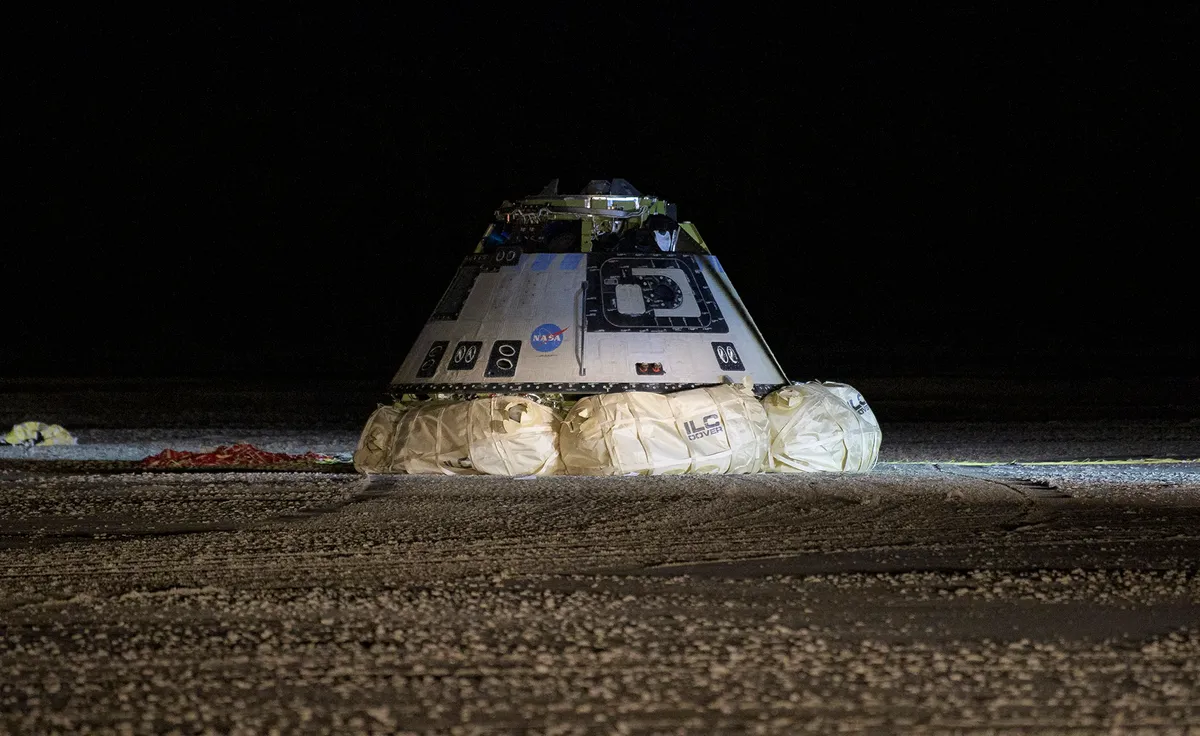
SpaceX's Crew Dragon successfully passed its ‘pad abort test’ in May 2015.
Unlike previous abort systems – where a rocket tower adjacent to the crew capsule ignites to detach it from the launcher rocket in the event of a failure – the Crew Dragon has an integral abort system: 8 SuperDraco rockets built into the wall of the capsule.
This means the capsule has the ability to abort at any point, not just at the launch pad.
Meanwhile Boeing had been working on fixing an issue with control of the craft in its abort system.
“In some abort scenarios, Boeing has found that the spacecraft may tumble and that could pose a threat to the crew’s safety,” said a January 2018 report by the US Government Accountability Office.
To validate its system, the company conducted wind tunnel and launch pad tests.
The companies also developed bespoke landing systems. Boeing’s Starliner is the first US-built capsule designed to return to land, rather than sea, so it has parachutes and airbags to absorb the shock of a ground-landing.
Boeing says this makes the capsule reusable up to 10 times. SpaceX’s Crew Dragon lands conventionally, using parachutes to splash down in water.
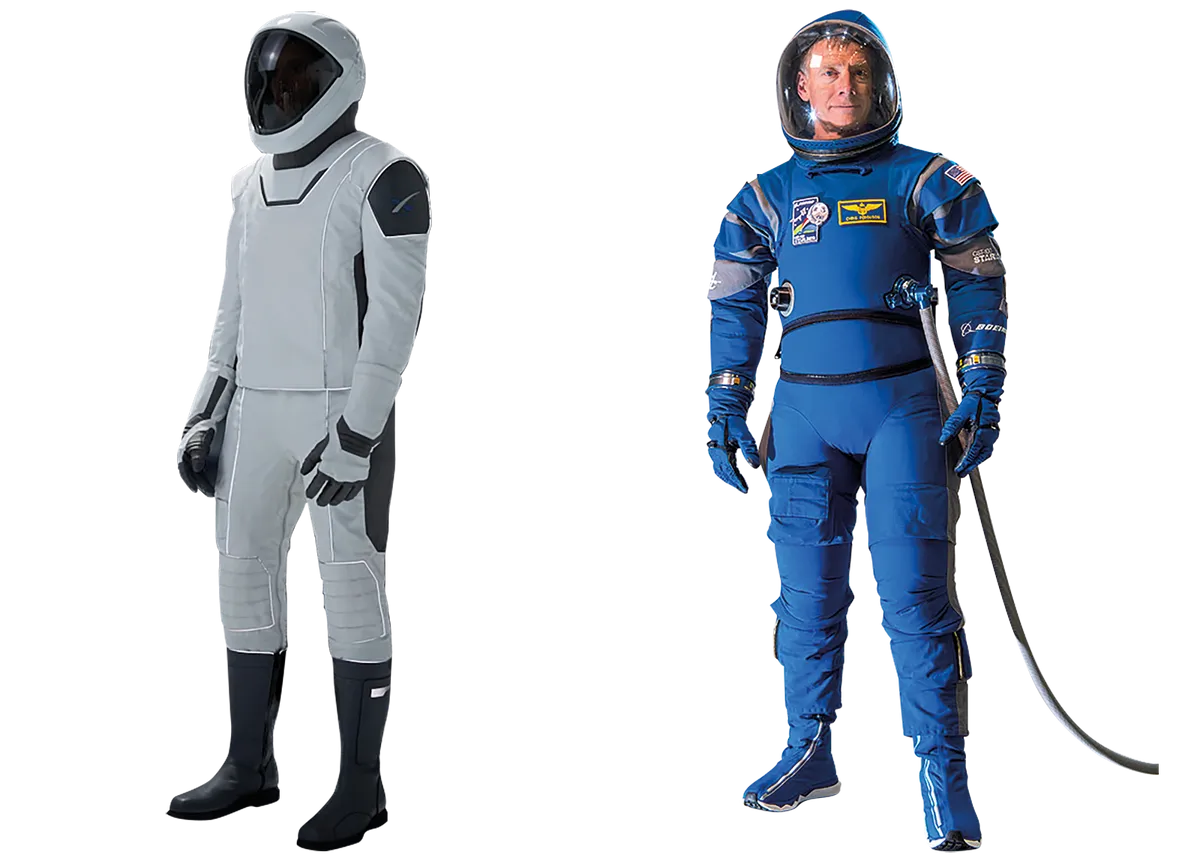
Both companies have also been working closely with NASA and the US Department of Defense to test and practise crew recovery scenarios.
For Starliner this meant testing emergency water landings, as it is designed to land on ground.
Other tests included validating the engines: Starliner’s four launch abort engines and 48 thrusters, and Dragon’s Merlin and SuperDraco engines for the Falcon 9.
Boeing has also conducted parachute tests over Yuma, Arizona, dropping replica capsules from a balloon at 30,000 feet. SpaceX has dropped its parachute test vehicle from aircraft 25,000 feet over California’s Mojave Desert.
2020 is due to herald a momentous new epoch in space travel: American astronauts once again lifting off from US turf, but for the first time hitching rides with private carriers to space.
Science writer and editor Shaoni Bhattacharya has loved rockets since watching SpaceShuttle launches as a child.

